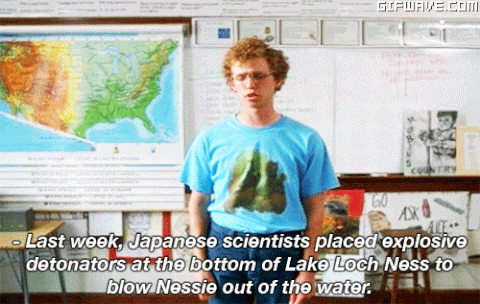Is Nessie real? A brief history.
The Loch Ness Monster is a mythical animal that “allegedly” lives in Loch Ness, a large freshwater loch connecting the east coast of Scotland at Inverness with the west coast near Fort William. Accounts of this aquatic beast living in the loch date back 1,500 years, however, all evidence has been discredited thus far. That hasn’t diminished the public’s passion, however, for any news about “Nessie.”
Loch Ness has the largest volume of fresh water in Great Britain; the body of water reaches a depth of nearly 800 feet and a length of about 23 miles.
Scholars of the Loch Ness Monster have found many references to “Nessie” in Scottish history, dating back to around 500 A.D., when local Picts carved a strange aquatic creature into standing stones near Loch Ness.
The earliest written reference to a monster in Loch Ness is a 7th-century biography of Saint Columba. He was the Irish missionary who introduced Christianity to Scotland. In 565 A.D. when St. Columba was on his way to visit the king of the northern Picts near Inverness, he stopped at Loch Ness to confront a beast that had been killing people in the lake. It was described that St. Columba saw a large beast about to attack another man and intervened, invoking the name of God and commanding the creature to “go back with all speed.” It is said that the monster retreated and never harmed another man.
In more recent history, in 1933, a new road was completed along Loch Ness’ shore, which gives drivers a clear view of the loch. On May 2, 1933, the Inverness Courier reported that a local couple claimed to have seen “an enormous animal rolling and plunging on the surface.” The same couple also claimed to have discovered footprints of the beast after it emerged from the water and crossed the road. This story of the Loch Ness Monster became a media sensation, even London newspapers sent correspondents to Scotland and offered a £20,000 reward for capture of the beast.
Swarms of tourists descended on Loch Ness and waited for an appearance by the beast. Plaster casts of the footprints were sent to the British Natural History Museum, which reported that the tracks were that of a hippopotamus, specifically one hippopotamus foot, probably stuffed. This practical joke temporarily squashed the Loch Ness Monster mania, but stories of sightings continued.
A photograph emerged in 1934 that seemed to show a dinosaur-like creature with a long neck peaking out of the murky waters, leading many to speculate that “Nessie” was a solitary survivor of the long-extinct plesiosaurs who died off about 65 million years ago.
Photograph from 1934.
After that, amateur investigators kept an almost constant watch on the loch and in the 1960s several universities launched expeditions to Loch Ness, using sonar to search the deep water. Nothing conclusive was found, but in each expedition the sonar operators did detect large, moving underwater objects they could not explain.
In 1975, Boston’s Academy of Applied Science combined sonar and underwater photography in an expedition to Loch Ness. Their photo, after enhancement, appeared to show the giant flipper of a plesiosaur-like creature.
On your travels to Loch Ness, you will hear many tales from locals, tourists and maybe even amateur investigators of the legend of the Loch Ness Monster. No matter what you believe to be true, I hope you take the opportunity to try and see her for yourself.
Contact us today to help plan the perfect Loch Ness experience.


